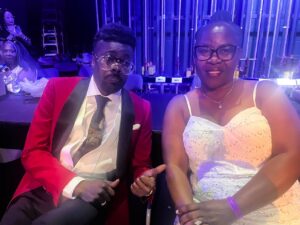
Eating the evidence
Inmates swallowing SIM cards as devious plots continue behind bars
A number of high-profile prison inmates have reportedly taken to swallowing their subscriber Identity Module (SIM cards) to prevent prison authorities from getting hold of their devices and turning them over to law enforcers for forensic examination, which would reveal their contacts, conversations, and plots.
Despite the existence of cellphone jammers in some prisons, inmates have been able to make and receive calls from behind bars.
However, National Security Minister Dr Horace Chang is insisting that crime fighters are still a step ahead of the criminals.
According to Dr Chang, law enforcers have managed to disrupt a number of devious plans made from behind bars.
A SIM card — which is the removable chip inside a cellphone that stores data unique to the user, such as passwords, phone numbers, and messages — is designed to allow the user to connect to cellular network towers so they can send text messages and receive calls. These cellular towers can also reveal the location of the user. Smartphones can, however, stay connected without a physical SIM card as long as there is access to the Internet.
In July 2020 Dr Chang, in his sectoral debate presentation, said convicts who have been issuing instructions to prisoners on the outside will be moved to newly constructed cells within seven days from the time of his speech. He told the House of Representatives then that the first 24 such inmates would be moved in an effort to cripple the continuation of criminal activity from behind bars.
“We will have all the high-value criminals in a place where they can no longer give instructions,” the minister told the House then.
Dr Chang at that time did not give details, but said the new cells for these high-profile criminals were to be equipped with technology that jams communication signals. He said that a double murder which had taken place in rural Jamaica at the time was one example of incidents engineered by individuals behind bars. He said the police, using technology, were privy to conversations in which the incarcerated figure gave instructions for the killings.
Responding to questions from the Jamaica Observer recently about the new methods of evasion, Dr Chang said, “The challenge of controlling communication is a big one. We are looking at how we can use technology to deal with that, but those high-value criminals are very creative and all kinds of creative means are being used. [But,] we are getting better at managing them, and we have been able to prevent a lot of their instructions going out — but we still have a way to go.”
A highly-placed law enforcer, in alerting the Observer to the practice, said the prisoners, by ingesting the cards, do this so that when authorities conduct search and seizure activities only the handsets are found — minus the storage device. The source said others utilise “burner phones”, which are cheaper, devoid of the bells and whistles of a smartphone, and are believed to offer a higher level of anonymity compared to regular phones. They, however, are not completely untraceable as burner phones can be traced by law enforcement agencies using various methods. He further speculated that inmates presenting with internal complications could be suffering as a result of their decision to swallow the memory cards.
But according to Dr Mike Mills, gastroenterologist, swallowing a SIM card has little or no impact on the individual, at least not in the short term.
“SIM cards are typically made with plastic, with components of silicone, and small amounts of gold, and lesser of other materials, for example, paint. Swallowing a SIM card whole would not cause any health problems as it would be undigested and pass out with the next normal stool, usually. None of the parts are nutrition but neither would they be harmful when ingested as a one-off event,” he told the Observer.
According to Dr Mills, “chewing and crushing then swallowing a SIM card would not change the fact that it would mostly pass out in pieces with the subsequent stool”.
He added: “These would have to be ingested on an extraordinarily high volume or frequency to have any long-term effect which is likely to be autoimmune or possibly carcinogenic in theory. SIM card ingestion as an event basically has no adverse health [inpacts].”
Commenting further on the issue Dr Chang said, “We can always get them X-rayed [to locate the missing chips] but, as I said, they are finding many innovative and creative ways but I think we are ahead of them — and we are going to keep ahead.”
Requests by the Observer to the Department of Correctional Services seeking to obtain data about searches and seizures conducted by its officers in recent months have not yet been responded to.
In the meantime, there have been several instances in which intelligence from confiscated cellular phones, when entered into evidence during trials, have led to convictions.
Only this month alleged leader of the Westmoreland-based King Valley Gang Derval Williams, otherwise called Lukie, and his sidekick Christon Grant were declared “guilty of conspiring” — via cellular phones — to murder a Crown witness while behind bars at Horizon Adult Remand Centre in 2020, the same year they were let off on anti-gang charges. In June 2020 correctional officers, during searches of the cells occupied by Williams and Grant, discovered cellular phones which the men claimed belonged to them. The phone claimed by Williams was discovered in the ventilation area at the back of the cell, while the handset claimed by Grant was found in the groove beneath a five-gallon water bottle, held in place by a bar of soap. The men were charged under a four-count indictment, with one count each of conspiring to murder and concealment of a prohibited article (two cellular phones).
A digital forensics expert brought by the prosecution in April, when the case began, outlined evidence to prove that the confiscated phones truly belonged to the men.
In one of several voice notes played into the records of the tribunal, a voice identified by two Crown witnesses as belonging to Williams was heard saying he had received intelligence that a particular top-flight female investigator had visited the targeted witness on three occasions and that she was supposedly trying to shore up evidence against them. Supreme Court judge, Justice Carolyn Tie-Powell, in her summation and verdict, said the court accepted the evidence that there was communication between Williams and Grant, on their respective phones, by way of text messages and WhatsApp voice notes. The sentencing for the men has been set for the next court term, which begins in September. A social enquiry report and antecedent report were ordered for both.
Recordings of conversations between alleged members of the St Catherine-based Klansman gang and convicted leader of the One Don faction, Andre “Blackman” Bryan, while he was behind bars, played a critical role in that trial, which began in 2021 and concluded in 2023, when 15 of 33 accused were found guilty of crimes ranging from murder, illegal possession of firearms and ammunition, and membership in a criminal organisation.
The testimony of Witness Number One, a former gang member-turned-Crown witness, was the lynchpin of the Crown’s case in what was the largest gang trial in the country’s history and the Caribbean, as part of his exploits were captured in recorded telephone conversations amongst the gangsters as they plotted and discussed their endeavours, which he then turned over to law enforcers.

























